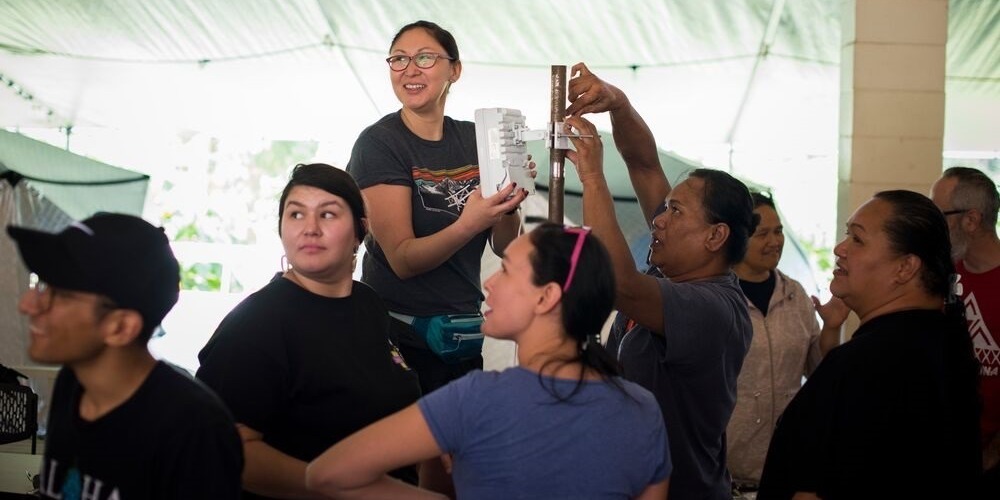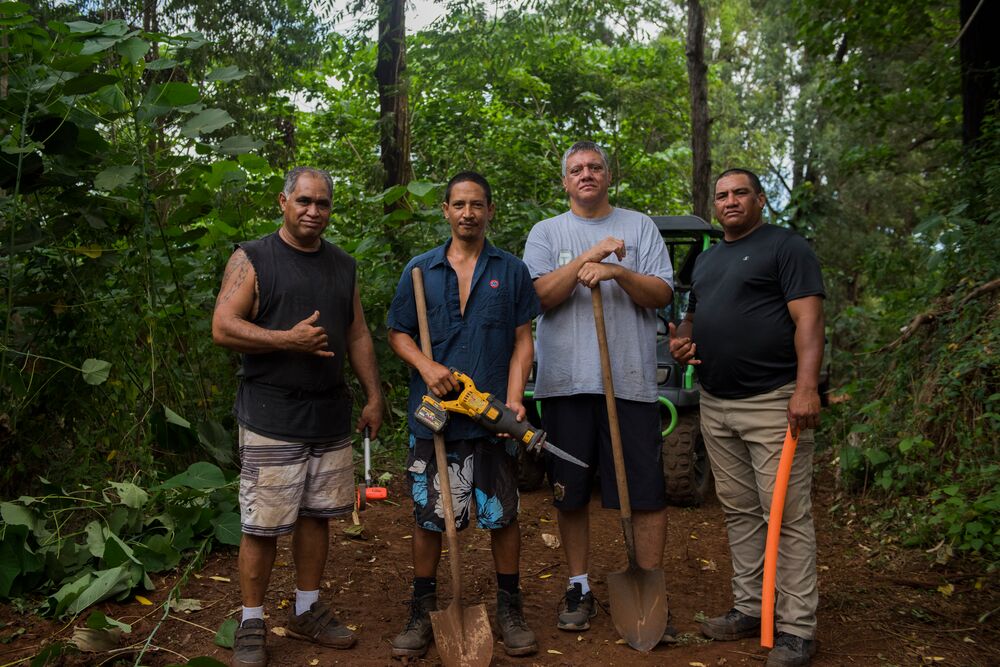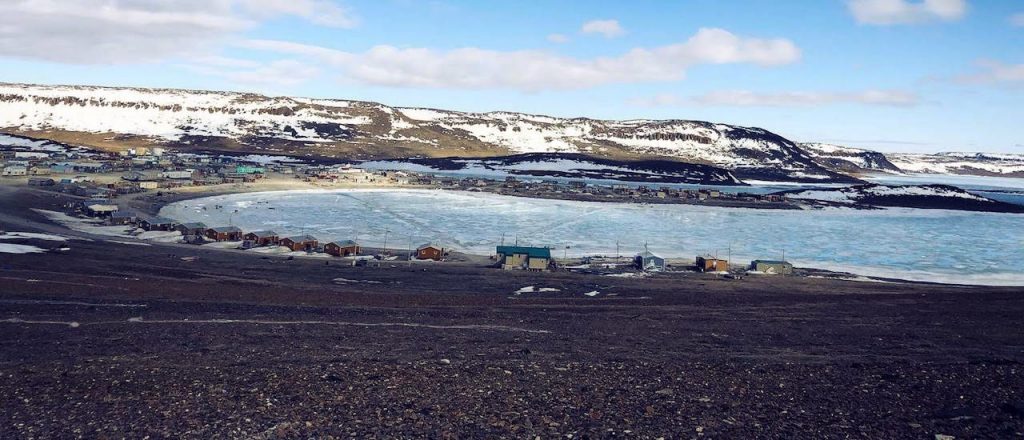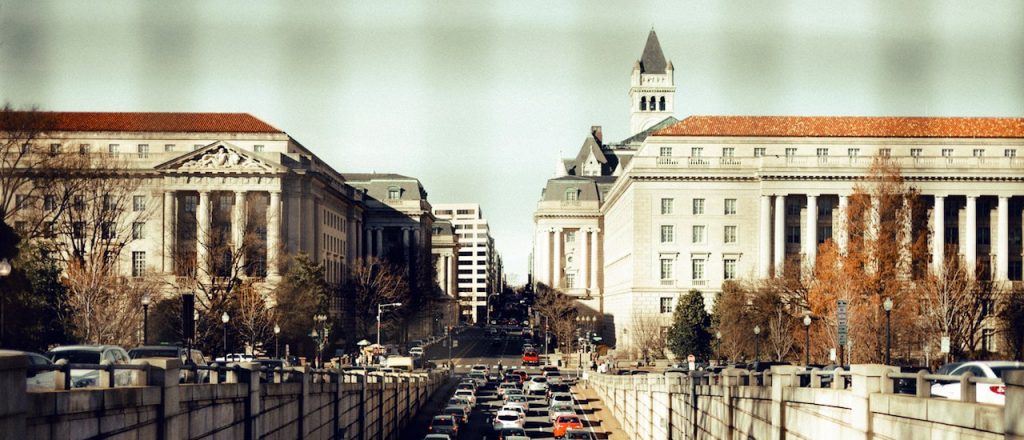Author Archives: Katie Jordan
Author Archives: Katie Jordan

At the 2020 Indigenous Connectivity Summit (ICS), participants asked the Internet Society to create a “centralized database that captures funding opportunities, eligibility, and information on how to apply.” There is currently no coordinated federal database where applicants can find all available funding sources. This is particularly challenging for those without Internet access – the intended benefactors of funding – as they are unable to surf the web to research all the different departments, commissions, and agencies that offer grants and loans related to Internet access.
Today, I am pleased to announce the launch of the Guide to Federal Broadband Opportunities in the U.S. By creating this consolidated resource, especially as large amounts of funding become available as a part of COVID-19 relief and Tribes begin utilizing their Educational Broadband Service spectrum, the Internet Society hopes to assist our community to access these vital funds.
Over the past three months, we have worked with our partners to create a comprehensive database of federal funding opportunities in the United States. These opportunities vary dramatically in size and include a variety of deployment and end-user scenarios. For example, Continue reading

This opinion piece was originally published in The Hill.
Now is not the time to be careless with laws that could harm the Internet we rely on more than ever in our day to day lives.
Policymakers owe it to the billions of users around world that rely on the Internet for work, education, and daily activities to do their homework before attempting to change laws so pivotal to the Internet’s success.
And yet, the uptick of lawmakers making hasty changes to the law known as “Section 230” is proof of uninformed decision making that has the future of a law that helped shape the Internet looking increasingly grim.
In the last two years, there have been at least 18 attempts – via bills, executive orders and other initiatives – to try blow up the rule that has kept Internet intermediaries from being liable from the actions of their users since 1996. Within each of those efforts, the definition of what will be impacted has varied widely from “platforms” to “interactive computer services” and “Internet intermediaries.”
Depending on these definitions, and the larger policies they are attached to, the associated impacts of these proposals could be annoying, or they could Continue reading

People around the world are relying on the Internet to keep them connected to everyday life, but Indigenous communities in North America are being left behind by companies and governments. Lack of connectivity means many are unable to access even basic information and healthcare. And while COVID-19 has hit Indigenous communities especially hard, lack of access means they can’t use services that connected populations consider critical, such as remote learning and teleworking.
We must address this critical gap.
For years, the Internet Society has worked with those very communities, along with network operators, technologists, civil society, academia, and policymakers – bringing them together to discuss what can be done collectively to narrow the digital divide. We do this through our Indigenous Connectivity Summit (ICS) and the pre-Summit Trainings: Community Networks and Policy and Advocacy.
This year, though we can’t meet in person, we’ll hold a virtual event.
The Summit will take place October 5-9, 2020, with training sessions beginning the first week of September. Those who register for the Summit before Friday, September 11th will receive a swag bag and materials for hands-on training prior to the Summit. Continue reading

While Indigenous communities across the US battle some of the most brutal COVID-19 mortality rates in the country, they’ve simultaneously raced against the clock to take advantage of a once-in-a-generation opportunity to access and manage their own broadband.
The Tribal Priority Window is an unprecedented opportunity for eligible US Tribes to apply for 2.5GHz spectrum leases ahead of the federal auction. Targeted at the most digitally underserved communities in the US— where only half of housing units have access to broadband— the Window is intended to enable rural Tribes access to Internet service and the development of services to narrow the digital divide. The application process posed significant challenges to Tribes who already struggle with poor connectivity. The digital format, coupled with COVID-19 realities, has hampered their ability to file applications within the deadline.
Due to the insurmountable obstacles posed by the pandemic, Tribes and nearly 100 organizations have called on the Federal Communications Commission (FCC) and Congress to extend the Tribal Priority Window by 180 days.
In response, the FCC has granted them just 30 additional days to file their applications. In its order, the FCC says that this extension is due to the unusual Continue reading

When the EARN IT Act was introduced in March 2020, technologists, civil society organizations, academics, and even a former FBI General Counsel blasted the bill as a thinly veiled attempt to prevent platforms from keeping users safe with strong encryption. The bill had implications for intermediary liability, of course, but it was clearly a play to take down the strongest digital security tool we have online.
The EARN IT Act is now a monstrous version of its previous self. It would not only weaken the ability of platforms to protect users through encryption, but fundamentally alter how platforms operate, leading to dangerous consequences for users and the global Internet.
While the new version of the bill would prevent the federal government from forcing platforms to weaken encryption to maintain their intermediary liability protection (a foundational aspect of most companies’ business plans), it would essentially allow states to pass their own version of the original EARN IT Act. This would create a chaotic patchwork of state-level laws, threatening user security across the country and creating borders for a networking system that was never meant to recognize them. This bill would not only weaken the ability of platforms to protect users through Continue reading

By now, many of us are realizing we’ve been taking access to basic things for granted, such as social interaction, health care, on-site education, and…the Internet. While always valuable, the Internet is now a lifeline offering a fortunate few the ability to adapt and maintain a semblance of reality and connection to our employment, health services, and our family and friends. But those who don’t have access to fast, reliable broadband Internet are experiencing the pain of staying at home. Last year, an analysis by Microsoft indicated that 162.8 million Americans aren’t able to use the Internet at broadband speeds. That’s unacceptable, and while there are steps that communities continue to take to build their own networks, Congress needs to lead by taking steps to ensure that broadband access is available at an affordable price to all Americans.
While some cities and states have begun to relax orders, our return to normal life is still a long way off.
Congress took the first important step with the CARES Act, but it did not go far enough. The HEROES Act and the COVID-19 DISASTER in Indian Country Act are a more serious step toward addressing the connectivity needs of localities, and we applaud these Congressional actions. Now, it is time to move this critical legislation Continue reading

Last week, the U.S. Congress passed the third stimulus bill in response to the COVID-19 pandemic. This bill primarily focused on economic relief for companies, individuals, cities, states, and tribal communities. It allocates over $2 trillion in funds for a variety of measures intended to ease the burden of COVID-19.
Some of the included measures have been in the news for weeks, including those related to individual checks for those financially impacted by the virus. But there is an element to this bill that is equally important, not only for our ability to cope with the virus now but also to permanently change our country for the better.
These emergency funds allocate $150 billion to states and territories, including $8 billion specifically for Tribal governments, for “coronavirus relief.” What that relief looks like, however, is relatively vague. If a community was financially impacted by the pandemic between March and December of this year, in a way that they did not originally anticipate in their budgets, this fund covers most of those expenses.
And what is one of the biggest impacts we’ve seen? Millions of people have been forced to isolate themselves at home and carry out their daily Continue reading

As Canada considers how to renew its broadcasting and telecommunications regulatory regime, it should steer clear of recent recommendations that would impact key Internet properties that foster Canadian innovation online.
On Jan. 29 the Broadcasting and Telecommunications Legislative Review (BTLR) panel handed the Canadian government 97 recommendations to consider as it prepares new legislation to update the decades-old Telecommunications Act, Radiocommunication Act and Broadcasting Act.
While it has laudable advice on how to improve access to rural and remote Indigenous communities in Canada, the report’s major flaws would inhibit the same Canadian innovation the recommendations intend to promote.
This includes giving Canadian Radio-television and Telecommunications Commission (CRTC) the authority to treat the Internet like a broadcasting network, and setting unrealistic rules that would harm crucial elements of the Internet in the name of promoting Canadian content online.
There are many reasons you can’t treat the Internet like a traditional broadcaster, but the key one is this: the Internet is not like other technologies.
While it is essentially just an interconnected network of networks – hence the name: Inter-net – the Internet was built with a unique set of properties that were critical to its success to date: openness, decentralization, Continue reading

In June of this year, I had the great privilege of traveling to Ulukhaktok, NWT, Canada to talk to community members about the possibility of building a new, local Internet service network. As a result of these meetings, and the incredibly driven individuals I met with in Ulu, this time next year, Ulukhaktok will be the proud owner of the far-most Northern community network in the world.
I left Washington, D.C. in the throes of summer – upper 80-degree weather and so humid you’d feel wet the second you stepped outside. Two days and five planes later I was in Ulukhaktok, a community of about 400 people on the 70th parallel. Summer there is a little different, and I explored the community amidst summer snow and 24-hour days.
I spent four days getting to know the community, and it wasn’t hard to understand the deep sense of community pride right away. Ulu is a beautiful, U-shaped town on the edge of the Arctic Ocean. It’s filled with people who will stop when they see a stranger, smile, and ask who you are and what you’re doing. And every time someone stopped, I told them about the Internet Society, Continue reading

Indigenous communities across North America are working to bridge the digital divide.
Each year the Indigenous Connectivity Summit (ICS) brings together community leaders, network operators, policymakers, and others to talk about new and emerging networks and the policies that impact them. During the two-day Summit, people from across the United States, Canada, and the rest of the world share best practices, challenges, and success stories – and learn how they can work together when they return home to solve connectivity challenges in Indigenous communities.
This year, we’ll be in Hilo, Hawaii from November 12-15.
But that’s not nearly enough time to cover everything, especially with close to 1,000 amazing participants (200 in-person and 700 online) ready to share their stories and create new connections.
So we’re trying something new. As we’ve done before, the ICS will still be split into two parts: a two-day training and a two-day event. But this year, participants can also attend a series of two distinct virtual training sessions before the event in Hawaii: Community Networks and Policy and Advocacy.
These sessions will allow participants to spend time over the course of several weeks getting in-depth information about two of the topics we spend Continue reading

On May 15th, the White House tweeted it had created a new online surveying tool for Americans to report instances of social media censorship due to political bias. Setting aside the politics of this move, there are serious privacy and security concerns that come with hosting such a survey on its website.
When users visit the reporting site, they’re required to give personal information including their name, citizenship status, zip code, phone number, and email address, all before any questions are actually asked about the alleged social media bias. They are then prompted to include links to their social media platforms, usernames, and other digitally-intrusive information.
Sound fishy? It should.
That is a significant amount of personal, highly-identifiable information to give up as a part of a selective survey. The irrelevance of most of this information to the survey’s purpose begs the question: why does the government need it and what will they use it for?
Neither question is answered anywhere in the survey or its related materials. That alone poses a serious privacy concern. If users don’t know how their data will be used, how can they trust that their information is secure and being used only for the Continue reading

After more than a decade of regulatory ping pong, net neutrality’s future in the United States is still unclear.
Since 2004, FCC rulemakings have been caught in a vicious cycle. They have been passed, fought in court, and returned to the FCC with minor (and sometimes major) revisions. In the last few years there have also been numerous attempts to pass legislation, cementing net neutrality once and for all, but nothing has succeeded in Congress.
Recognizing the importance of finding a sustainable solution, the Internet Society proposed a collaborative process to help experts find common ground on this complex policy issue. Starting in June 2018, we convened an ideologically diverse group of experts to create a baseline set of principles for an open Internet.
The Net Neutrality Experts’ Roundtable series included representatives from the technical community, edge providers, academia, Internet service providers, industry associations, and both left- and right-leaning civil society groups.
In a series of meetings over ten months, participants discussed how to create a sustainable solution for net neutrality that protect the interests of Internet users while fostering an environment that encourages investment and innovation.
Ultimately, the group was able to create a consensus-driven set of bipartisan principles for an open Continue reading

Data Privacy Day is a little like celebrating the anniversary of your first date.
They are both a yearly occasion to reflect on the most important relationships in our life, the former with those who know the most about us, the latter with our significant other.
It’s also a reminder that relationships are built on trust – and how fragile that trust can be.
Privacy online relies on trust at its core. But as we become more reliant on connected devices and virtual assistants to handle our most intimate health, banking, and private information, we’re putting our trust into shaky hands.
Honesty is the foundation of trust and it’s just as important in our relationships with loved ones as those with data brokers. It’s crucial for data brokers to be honest with users about who, when, and how people have access to their personal data, especially as we transition into smarter homes and cities.
Let’s face it: there’s a huge market for the information we share online. Both U.S. and Canadian Internet companies are increasingly trying to collect our personal data – whether we know it or not.
It’s clear we want more control over our privacy, but each Continue reading